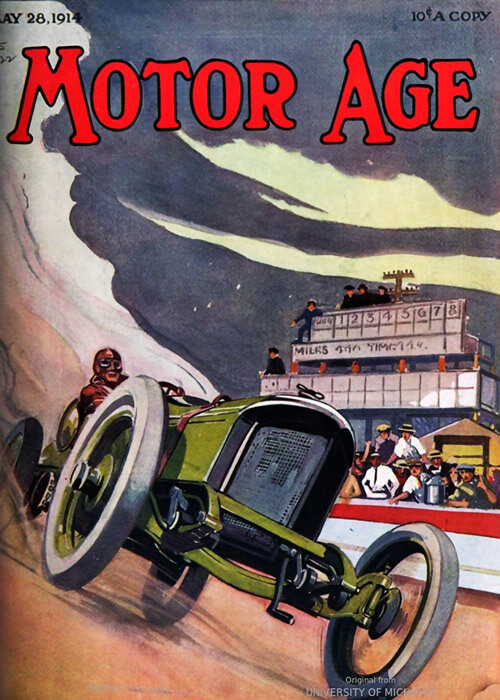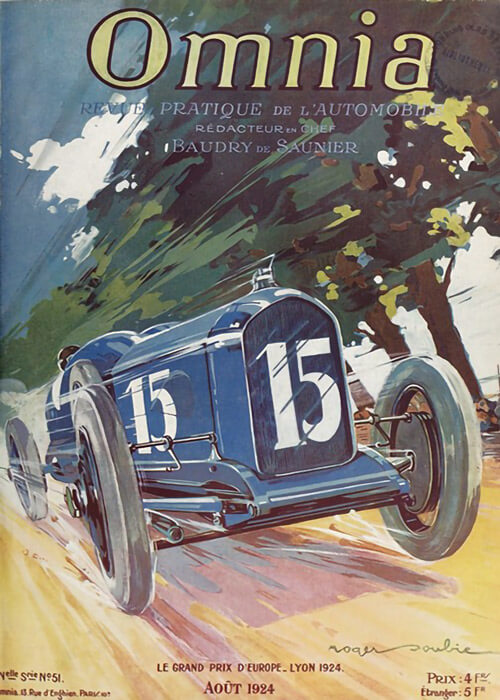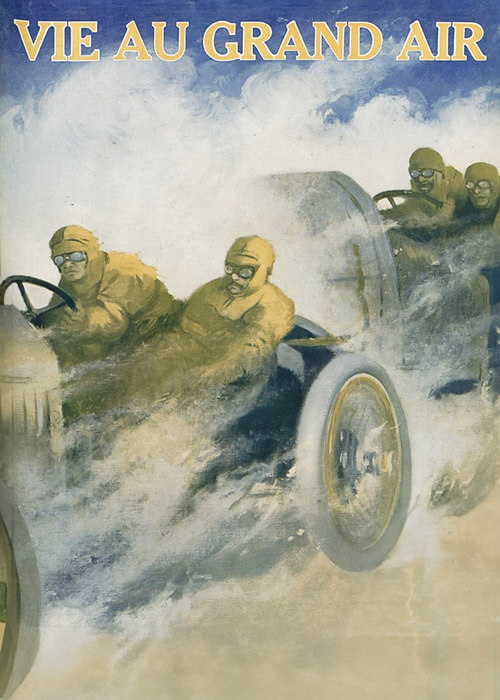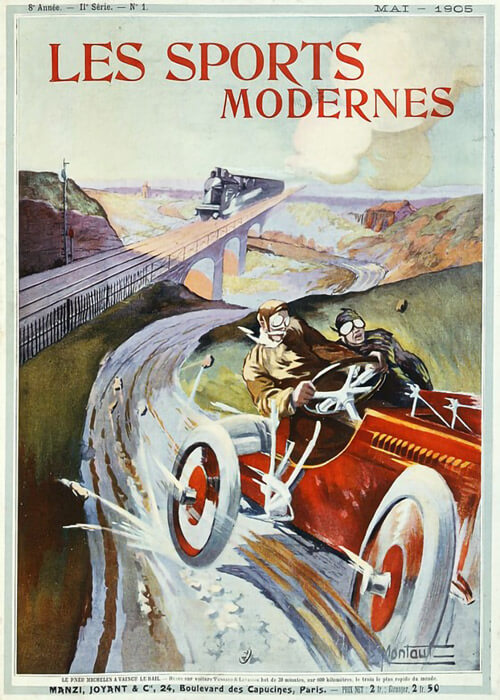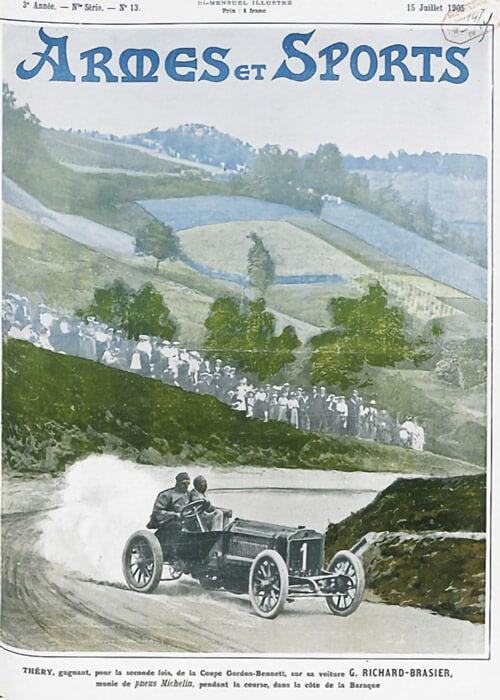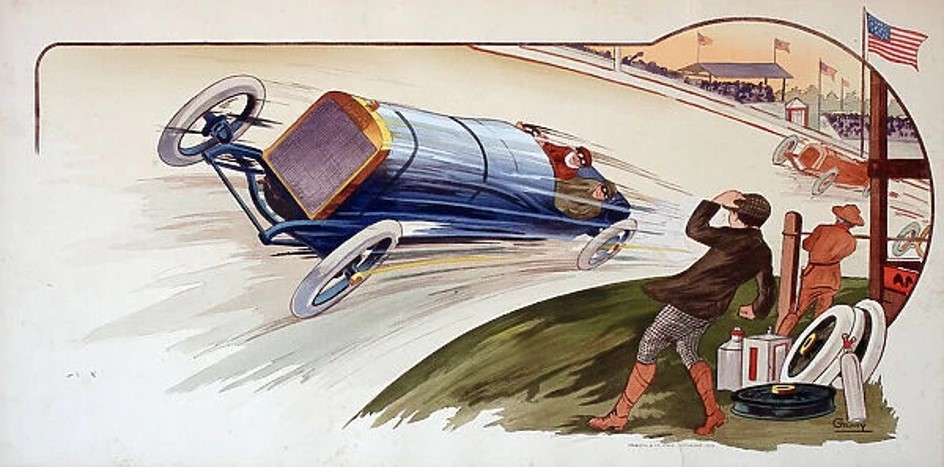Comments on the August 1909 motor racing events and there accidents.
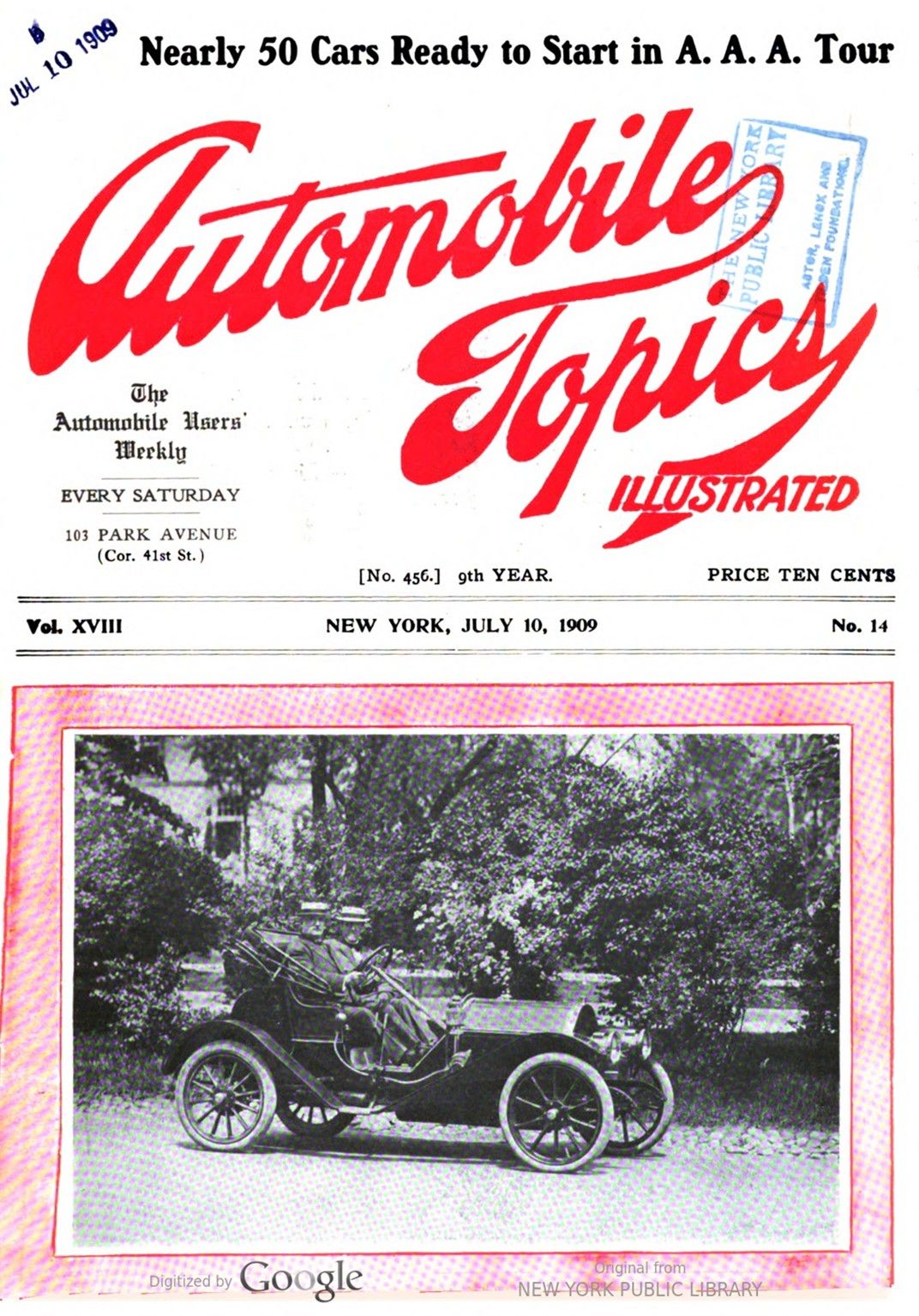
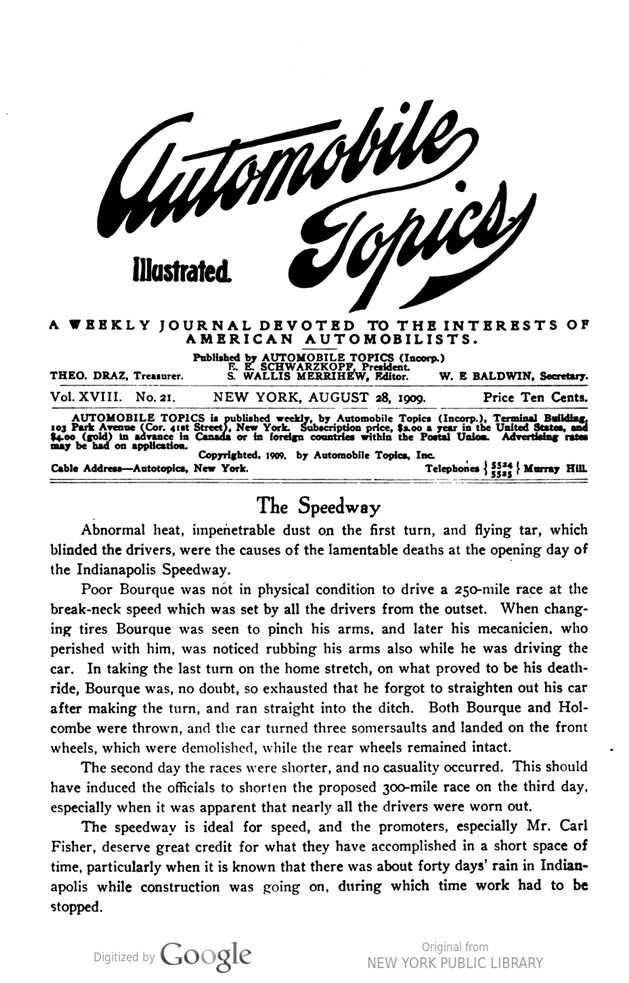
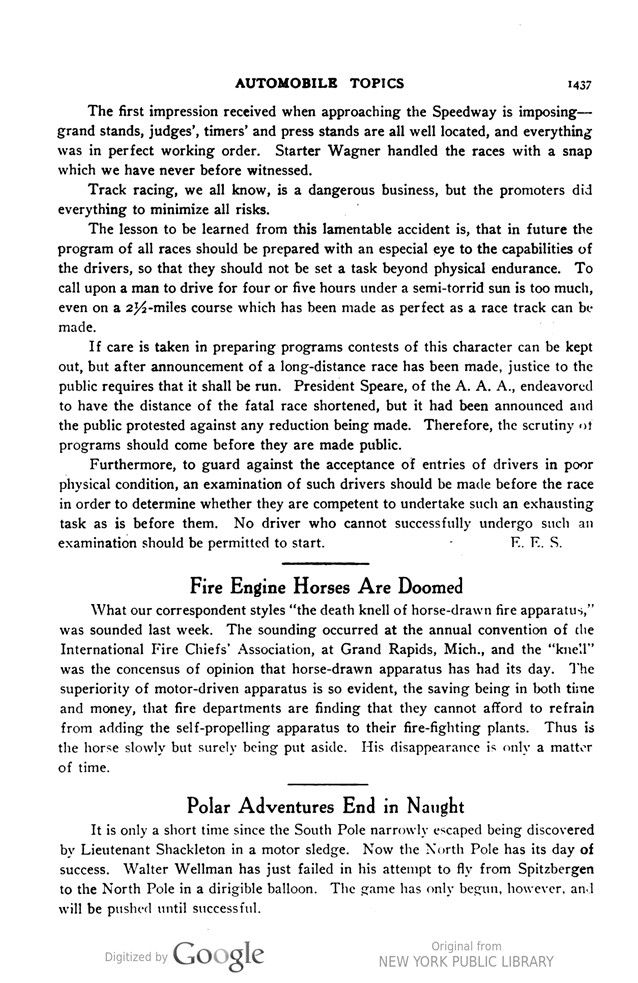
Text and jpegs by courtesy of hathitrust.org www.hathitrust.org, compiled by motorracinghistory.com
AUTOMOBILE TOPICS, Vol. XVIII, No. 14 July 10, 1909
Automobile Topics Illustrated.
A WEEKLY JOURNAL DEVOTED TO THE INTERESTS OF AMERICAN AUTOMOBILISTS.
Published by AUTOMOBILE TOPICS (Incorp.)
E. E. SCHWARZKOPF, President. S. WALLIS MERRIHEW, Editor. THEO. DRAZ, Treasurer. W. E BALDWIN, Secretary.
Vol. XVIII. No. 21. NEW YORK, AUGUST 28, 1909. Price Ten Cents.
AUTOMOBILE TOPICS is published weekly, by Automobile Topics (Incorp.), Terminal Building, 103 Park Avenue (Cor. 41st Street), New York. Subscription price, $2.00 a year in the United States, and $4.00 (gold) in advance in Canada or in foreign countries within the Postal Union. Advertising rates may be had on application. Copyrighted, 1909, by Automobile Topics, Inc. Cable Address-Autotopics, New York. Telephones5524 Murray Hill. 5525
The Speedway
Abnormal heat, impenetrable dust on the first turn, and flying tar, which blinded the drivers, were the causes of the lamentable deaths at the opening day of the Indianapolis Speedway.
Poor Bourque was not in physical condition to drive a 250-mile race at the break-neck speed which was set by all the drivers from the outset. When changing tires Bourque was seen to pinch his arms, and later his mecanicien, who perished with him, was noticed rubbing his arms also while he was driving the car. In taking the last turn on the home stretch, on what proved to be his death-ride, Bourque was, no doubt, so exhausted that he forgot to straighten out his car after making the turn, and ran straight into the ditch. Both Bourque and Holcombe were thrown, and the car turned three somersaults and landed on the front wheels, which were demolished, while the rear wheels remained intact.
The second day the races were shorter, and no casuality occurred. This should have induced the officials to shorten the proposed 300-mile race on the third day, especially when it was apparent that nearly all the drivers were worn out.
The speedway is ideal for speed, and the promoters, especially Mr. Carl Fisher, deserve great credit for what they have accomplished in a short space of time, particularly when it is known that there was about forty days‘ rain in Indianapolis while construction was going on, during which time work had to be stopped.
The first impression received when approaching the Speedway is imposing — grand stands, judges‘, timers‘ and press stands are all well located, and everything was in perfect working order. Starter Wagner handled the races with a snap which we have never before witnessed.
Track racing, we all know, is a dangerous business, but the promoters did everything to minimize all risks.
The lesson to be learned from this lamentable accident is, that in future the program of all races should be prepared with an especial eye to the capabilities of the drivers, so that they should not be set a task beyond physical endurance. To call upon a man to drive for four or five hours under a semi-torrid sun is too much, even on a 2½-miles course which has been made as perfect as a race track can be made.
If care is taken in preparing programs contests of this character can be kept out, but after announcement of a long-distance race has been made, justice to the public requires that it shall be run. President Speare, of the A. A. A., endeavored to have the distance of the fatal race shortened, but it had been announced and the public protested against any reduction being made. Therefore, the scrutiny of programs should come before they are made public.
Furthermore, to guard against the acceptance of entries of drivers in poor physical condition, an examination of such drivers should be made before the race in order to determine whether they are competent to undertake such an exhausting task as is before them. No driver who cannot successfully undergo such an examination should be permitted to start. E. E. S.
